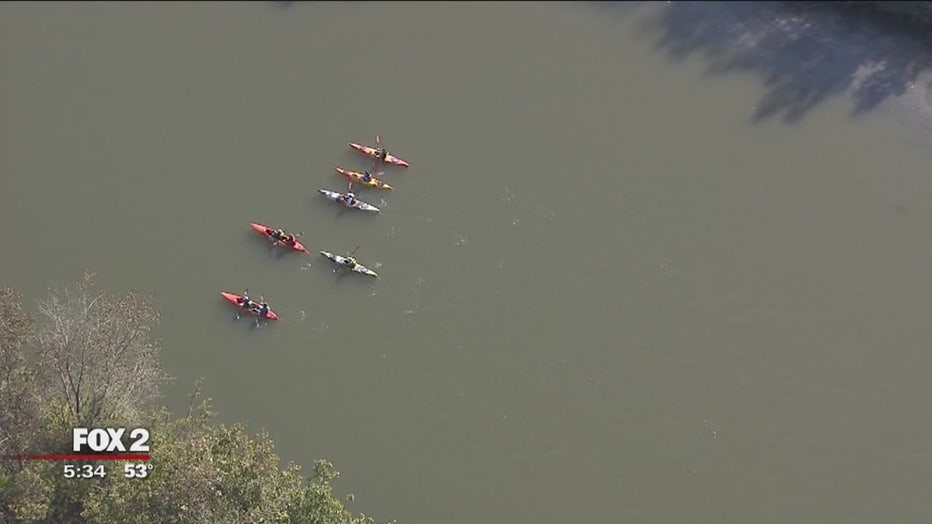More than $200 million in costs avoided as Great Lakes Water Authority disinfects Rouge River
RIVER ROUGE, Mich. - It's not exactly beach weather, but your 2020 self will be glad when warmer weather returns to Michigan after reading this news.
The next time you dip your toes in water near the Rouge River, rejoice its clean water you're immersing yourself in.
"If people are swimming and coming into contact with the water, they have less possibility of contracting any bacterial disease," said Majid Khan, with the Great Lakes Water Authority. "As of March 29, 2019, I am glad to say every single drop of the water that we treat here before we put it into the river, is completely disinfected - meaning all the bacterias are killed."
In a normal year, there are about 60 days where rainfall is too high for water and sewage infrastructure to handle. On these days, the Great Lakes Water Authority is unable to treat the water and bacteria its carrying as it finds its way into area water bodies.
Prior to that March date, officials became unnerved by measurements of bacteria. Levels were growing to a dangerous amount that could be harmful to people and area wildlife.
However, the water authority has devised a plan to reduce those levels at a cost only a fraction of what it could have been.
"We were able to come up with a plan of using existing infrastructure and that would reduce the cost or avoid the cost from $300 million to $44 million," said Khan.
The Great Lakes Water Authority initially devised a plan to expand upon existing facilities that would help them handle the water volume on rainier days. That plan would have cost taxpayers $300 million. Instead, the new plan is to retro-fit existing facilities at a sixth of the cost.
The Rouge River hasn't always been the beneficiary of such careful oversight. Prior to federal funding being allocated in the 90's or the passing of the Clean Water Act in 1972, there was very little stopping residents, businesses and factories from directly and indirectly polluting the channel.
This pollution coalesced in 1969 when the river caught fire after a torch fell on an oil slick due to a spill from a refinery that sat on the river. Since then, a region-wide effort to clean up the river has resulted in one of the greatest restorations of the environment in recent memory.

That means fewer beach closings due to elevated bacteria levels and an improved state of habitats that line the river's shorelines.
"There will be more wildlife attracted because of the quality of water improved and also the wildlife would thrive because of the improvement of the quality of the water," said Khan.

